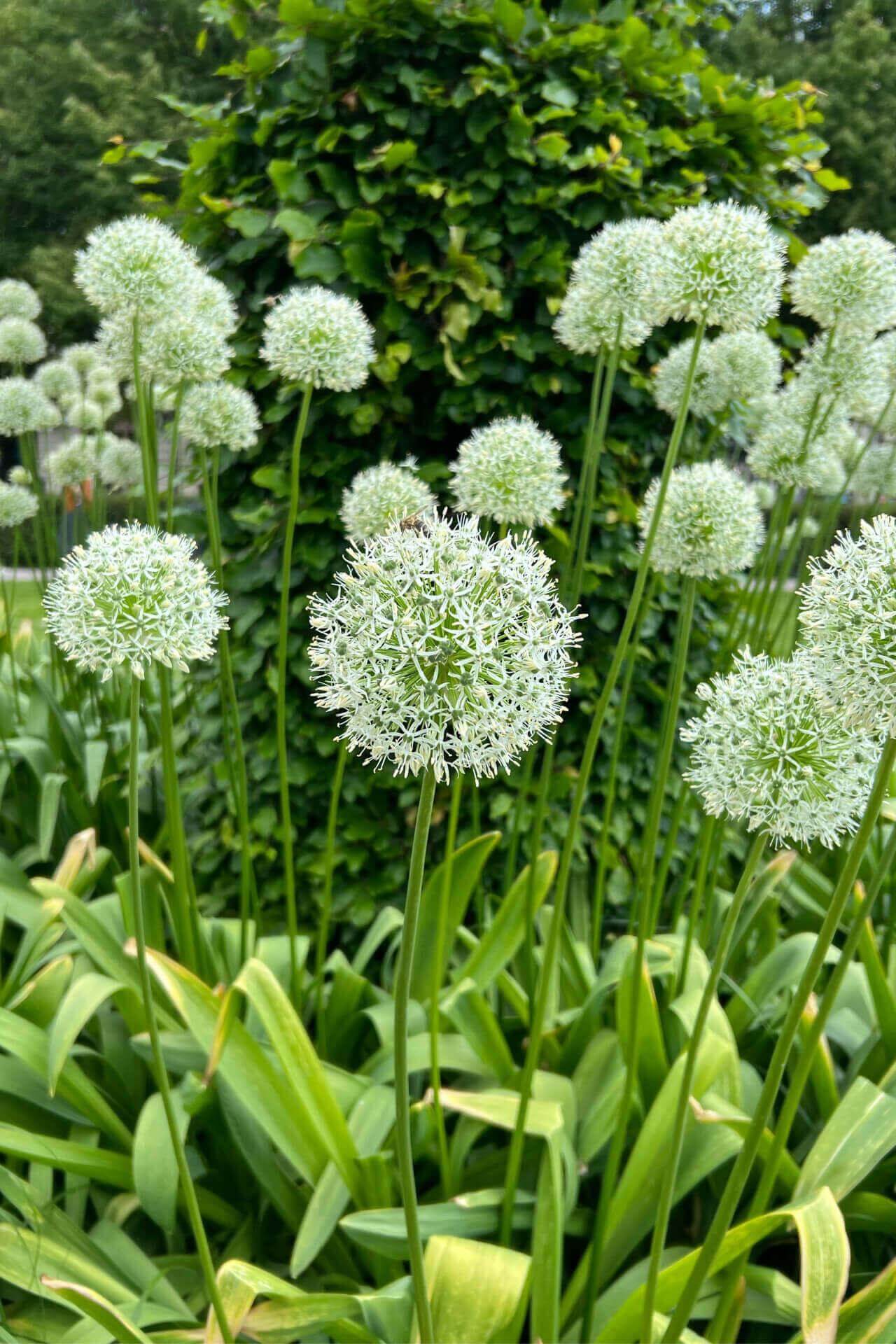Wild Garlic: A Versatile and Nutritious Forage
Wild garlic, also known as ramsons or bear garlic, is a perennial herbaceous plant that belongs to the Allium genus. It is a close relative of cultivated garlic and shares many of its characteristic flavors and aromas. Wild garlic is a popular forage plant for both humans and animals, and it has been used for centuries in traditional medicine and cuisine.
Physical Characteristics
:max_bytes(150000):strip_icc()/Wild-Garlic-Landing-Page-58a710e53df78c345b6cdb0e.jpg)
Wild garlic plants typically grow to a height of 12 to 24 inches (30 to 60 cm). They have long, slender leaves that are dark green in color and have a slightly flattened shape. The leaves have a strong garlic odor when crushed, and they are often used to flavor dishes. In the spring, wild garlic plants produce small, white flowers that are arranged in clusters. The flowers are followed by small, green fruits that contain black seeds.
Habitat and Distribution
Wild garlic is a native plant of Europe and Asia. It is found in a variety of habitats, including woodlands, meadows, and along riverbanks. The plant thrives in moist, shady conditions.

Nutritional Value
Wild garlic is a highly nutritious plant. It is a good source of vitamins A, C, and B6, as well as minerals such as iron, potassium, and manganese. The plant also contains compounds that have been shown to have antioxidant and anti-inflammatory properties.
Uses in Cuisine

Wild garlic is a versatile ingredient that can be used in a variety of dishes. The leaves can be added to soups, stews, and sauces to impart a strong garlic flavor. They can also be used to flavor meat and fish. Wild garlic leaves can be chopped and added to salads, or they can be used to make a pesto. The bulbs of wild garlic can also be eaten. They have a milder flavor than cultivated garlic and can be roasted or sautéed.
Medicinal Uses
Wild garlic has been used for centuries in traditional medicine. It has been used to treat a variety of ailments, including colds, flu, and digestive problems. The plant is believed to have antibacterial and antifungal properties. Some people also use wild garlic to lower blood pressure and cholesterol levels.
Harvesting and Storage
Wild garlic can be harvested in the spring when the leaves are young and tender. The leaves should be cut at the base of the plant. They can be stored in the refrigerator for up to a week. Wild garlic bulbs can also be harvested in the spring. They should be dug up when the leaves have died back. The bulbs can be stored in a cool, dry place for up to several months.
Conclusion
Wild garlic is a versatile and nutritious plant that has been used for centuries in traditional medicine and cuisine. It is a good source of vitamins, minerals, and antioxidants. Wild garlic can be used to flavor a variety of dishes, and it has been shown to have health benefits. If you are lucky enough to have wild garlic growing in your area, be sure to harvest it and enjoy its many benefits.
FAQs
Is wild garlic safe to eat? Yes, wild garlic is safe to eat. However, it is important to be sure that you have correctly identified the plant before consuming it. There are several poisonous look-alikes, including lily of the valley and lords-and-ladies.